
Having appeared in so many adventures over the years, it is no easy task to rank his games in some kind of ‘worst to best’ order, mainly for the reason that almost all of them are so darn good. To make the task a little easier we’ll just focus on the platforming games in the Mario series, as it hardly seems fair to stack the vastly different genres like Kart Racing to his sports titles such as Basketball or Football. Without further ado, let’s start at the bottom and work our way to the top.
20. Wrecking Crew (NES)

It feels a little unfair, especially since Mario’s name isn’t even in the title, but Wrecking Crew on the NES gets the honour of being bottom. A platform puzzler where you use Mario’s hammer Donkey Kong style to destroy things, but can’t jump… at all. It’s not bad, and is a fun distraction for a time, but that’s about all. It’s never fun enough. It’s little surprise that Mario has never really picked a hammer up as his weapon of choice since!
19. Mario Bros. (Arcade)

An unfortunately low rank for the game that named him, but the fact is this game, though fun isn’t in the same league as the other games on this list. Like Donkey Kong, this game is set on static screens (rather than scrolling) and the aim is to wipe out baddies that will attack from drain pipes around the screen. It’s fun, and was included in most Game Boy Advance Mario games mainly as a multi player extra, but that really sums up its value as an extra rather than as a standalone release.
18. Super Mario Land (Game Boy)

Mario’s handheld console debut proved that you could have a home console quality experience in the palm of your hand. Sticking closely to the play style of the original super Mario Bros, scrolling happens going right not left, and Mario can still pick up a fire flower as his power up. The low rank feels wrong for such a good game, but it’s just a sign of the tough competition.
17. Super Mario Bros. The Lost Levels (NES)
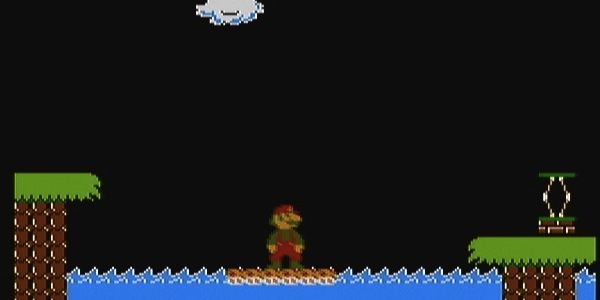
Known in Japan as Super Mario Bros 2, it wasn’t released in the west as it was deemed too hard and too similar to the first game. If you loved the original Super Mario Bros then this was the game for you. If you weren’t a mega fan of the original then maybe this wasn’t the game for you, as this game basically started off where the first game ended in terms of difficulty. It also was where Mario and Luigi became more than just palette swaps with slightly different abilities.
16. Super Mario Land 2: 6 Golden Coins (Game Boy)
15. Donkey Kong (Arcade)
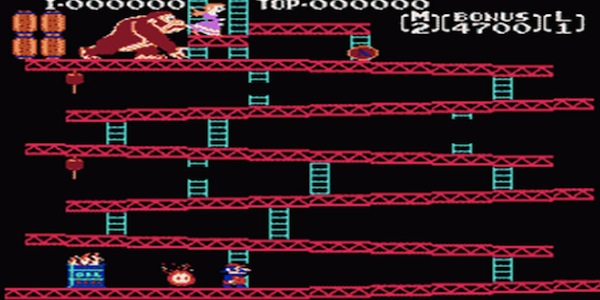
The game that started it all. Mario first came to us in this platformer without his Italian moniker, his usual girlfriend, or his mushroom kingdom pals. It’s incredible how well this game has held after all these years and is still just as playable and addictive as it ever was. This is exactly the type of game which would be a mainstay in the download charts if it were released on mobiles these days. A short game by modern standards, the real challenge came is playing the game on loop to get higher and higher scores. A challenge which was even the focus of a film released a few years back.
14. New Super Mario Bros. 2 (Nintendo 3DS)
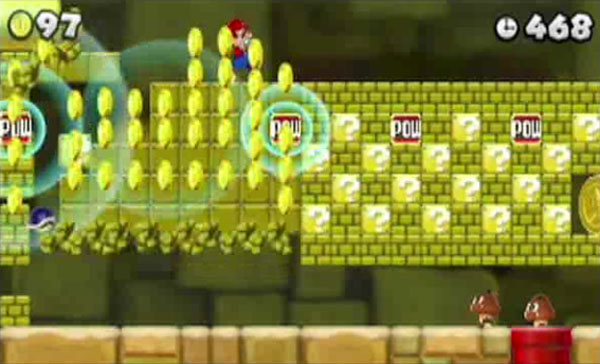
One of two new platformers for Mario in 2012, this brought improved visuals and new challenges to Mario. The theme of more coins then ever before certainly made for a new play experience, but it arguably wasn’t the step up for the series some expected. This title also brought about the dawn of download content for Mario, which displeased some as the stand alone adventure isn’t Mario’s longest, especially when compared to the lengthy classics like Mario World or Galaxy 2.
13. Super Mario Bros. 2 (SNES)

It’s the game that didn’t start life as a Mario title (In Japan it was released minus Mario as Doki Doki Panic before later being re-released as Super Mario USA) and is sometimes not viewed with the same regard as its 2D brothers. That doesn’t take away from the fact it’s still an immensely enjoyable experience. The game was later seen as strong enough to be Mario’s Game Boy Advance debut. That version was based on the SNES Mario All-stars version, with a few additional improvements to make for its best version to date.
12. New Super Mario Bros. U (Nintendo Wii U)

Mario’s latest is unfortunately not his greatest. It’s very very good make no mistake, but after thirty years of platforming, this is perhaps the least innovative platform game the Italian plumber has starred in. The shtick of the ‘New’ Super Mario Bros. games is ironically a healthy dose of nostalgia, but it’s frankly worn a bit thin by this forth outing. Everything about this game is right gameplay wise and the HD visuals do impress, but it in terms of actually playing the game it could just be a download add on the previous New Super Mario Bros. games.
11. Super Mario Sunshine (Game Cube)
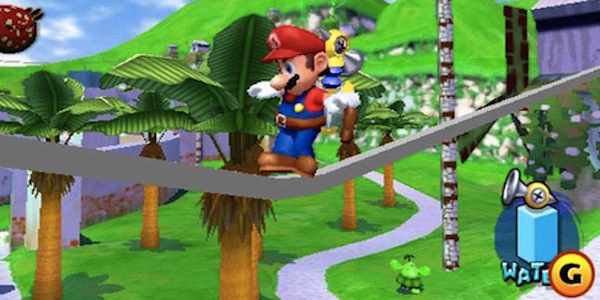
The black sheep of the 3D Mario family, like so many games on the Gamecube – it was great, but not quite what people wanted. Very much like Mario 64, Sunshine’s main innovation was Mario’s water jetpack which he had to use to wash away graffiti and fly through levels. The story was based around Mario going on holiday, and the game felt just like that; a trip away before his next epic adventure. Yoshi was playable, but collecting fruit to play as him was at times an annoyance.
10. Super Mario 3D Land (Nintendo 3DS)

9. Super Mario World 2: Yoshi’s Island (SNES)
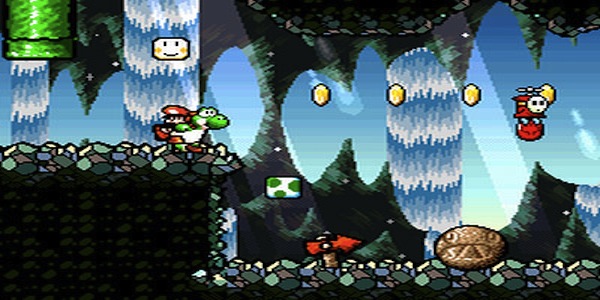
This game is always highly regarded, but it didn’t quite make the impact it deserved upon its release. Coming out at a time when Saturn and Playstation were wowing the world with polygons, and Donkey Kong Country was strutting some silicon graphics, Mario’s stylised pastel colours didn’t get as much fanfare as Mario games that came before it. This may not have been helped by the fact that Mario himself was only appearing in baby form, and left all the true platforming to Yoshi. Still this was an instant classic and introduced various colour Yoshis, and gigantic foes thanks to the Super FX2 chip.
8. New Super Mario Bros. Wii (Nintendo Wii)

Again proving that Mario in 2D is where he sells the most units, Mario Bros Wii took the nostalgia factor and hit it to ten. Still, Nintendo didn’t rely entirely on fond memories and loaded the game with new ideas including 4 player co-op play and clever use of tilt and motion controls. This game also brought back a resurgence in 2D platformers on home consoles, and led the way for Donkey Kong Country Returns, Sonic 4 and Rayman Origins.
7. New Super Mario Bros. (Nintendo DS)

Just beating it’s direct follow up is the game that put Mario back in two dimensions. After his DS launch remake of Mario 64, the man with a moustache surprised everyone by bringing his first new 2D adventure since the days of the SNES, and boy did he prove he was still king of the 2D platformer. This game went on to sell insane amounts of copies due to its simple pick up and play fun factor. The game also served as a massive nostalgia trip for gamers from yester year with all of the elements that made Super Mario Bros 1 and 3 so addictive back in their day.
6. Super Mario Bros. (NES)

It can be argued that some of the more recent games have eclipsed this game, but it ranks so high for its innovation and the fact that it is still just as playable as it ever was. You have to give the guys at Nintendo credit. With many other genres and game franchises you’ll go back and revisit their early entries to find that they are mere shadows of what they would eventually become.
Some games don’t age as well as others. Super Mario Bros has always managed to remain relevant. Just as they later would with his 3D debut, Nintendo made Mario’s first 2D adventure the standard that all contemporary rival platformers would have to beat.
5. Super Mario Bros. 3 (NES)

A huge step up in innovation after the original SMB, Mario Bros 3 is perhaps the most fondly remembered of the original NES trilogy. The game introduced items and suits so Mario could fly with the Tanooki suit and swim better than ever before with the frog suit. Mario’s new ability to fly and glide is still a pure joy when you have spent hours mastering the exact timing to blast through levels at breakneck speeds. The variety of levels and ideas and the tough boss stages ensure this game a place in the top five.
4. Super Mario Galaxy (Nintendo Wii)
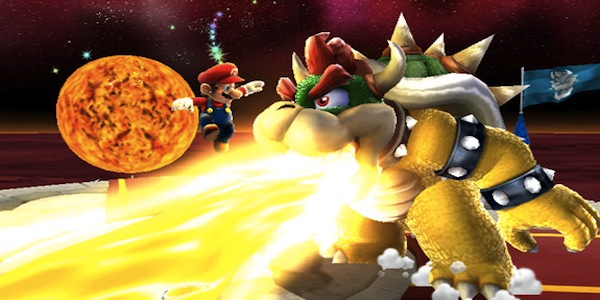
As much praise as Sunshine had received upon its release it couldn’t escape the comment of ‘It’s not quite Mario 64’. So it’s fitting that after Land, World, and the Sun Mario’s next adventure would be so ambitious he would be covering a whole galaxy. Definitely a step up from his Game Cube adventure, Mario featured in his most story driven platformer yet. People were expecting a lot from Mario’s Wii debut, and fortunately he didn’t disappoint.
One thing that may have been a blessing in disguise is how little the game relied on the Wii’s motion controls. Mario 64 hadn’t used them, and this was nearly perfecting the formula created by his 3D debut. That’s not to say it wasn’t without a few flaws. The game had Mario running around spheres, and this at times could be awkward to get used to as the controls would reverse whilst running in a straight line around the planets.
3. Super Mario World (Super NES)

Mario’s SNES debut was the ultimate refinement of the formula created on his NES games. The designs of the characters were launched into the 16 bit era, and whilst some elements have seen updates since (Yoshi was more bulky in his introduction) they have pretty much remained the same ever since. An enormous amount of levels, this game really took the fight back to Sega’s new kid on the block Sonic and showed the world why platforming was the house that Mario built. This was also the game where ‘Super’ Mario finally got a cape.
2. Super Mario Galaxy 2 (Nintendo Wii)

Mario’s 3D adventures have always come top of their class in their respective generation, so it seems only fitting that the only game that could top a 3D Mario would be another 3D Mario. For a game that originally started life as a would be director’s cut of the original, Super Mario Galaxy 2 proved only to perfect what came before it. The levels were arguably more creative and imaginative and they also took on board all the possible feedback to improve what Galaxy had established.
As much fun as it was to explore Peach’s castle in SM64, the hub levels became more of a chore then a joy, so they were removed and replaced with a map selection screen like Mario games of old, allowing you to jump straight into the action. Yoshi also joined the fun in a more fun and meaningful way then he had in Sunshine in more evidence that the development team had learned to refine and improve past experiences. If there was one gripe it is that the 120 green stars were perhaps a little too repetitive in nature. Still it gives great hope for what they will achieve with Mario’s 3D Wii U debut.
1. Super Mario 64 (Nintendo 64)

And so here we are. As has been listed atop hundreds of best video game lists before this is the obvious choice. Yawn…No! It’s the obvious choice for a reason. There’s a whole generation of gamers who remember the first time they tossed Bower into a bomb or ran from a haunted piano, and it gives a warm feeling inside. Super Mario 64 not only set the rules for a 3D platforming game, but also pretty much nailed them first go. Graphics are better now, but the cartoon visuals still hold up fine. In game cameras have improved, but it was only ever a minor gripe in this game.
For any minor flaws that can be pointed at SM64, it has a million redeeming qualities. If only Nintendo would recreate the game in HD and an orchestral soundtrack the game would be perfection. This game ranks number one not only because of its innovation, and impact on video games, but because when stacked up against the others it still has the best level design, gameplay and imagination. It’s the game every gamer should have played, and if you only ever play one Mario title, this should be it.



























